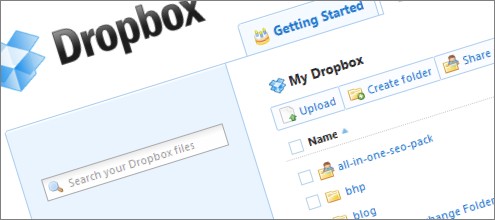It’s easier to write well when you’re fully absorbed in the task at hand. Devoid of extraneous thoughts, the words flow out of your brain, through your arms and onto the screen in front of you via the keyboard. At least, that’s how it feels when I’m doing my best work.
It takes concentration to write efficiently and effectively. And – arguably – concentration’s now harder to come by than ever before.
For starters, there are the online distractions. Frequently checking your email is the classic, but Twitter can be even worse. It’s easy to access and there’s always something new to read, even if it’s only a couple of minutes since you last looked.
Then there’s the other stuff. Phone calls. Shopping. Staring out of the window. Cleaning the bathroom. It all adds up.
How I’m going to become more focused
Like most people, when it comes to being productive I have good days and bad ones (it was a really, really bad one when I chose cleaning the bathroom over writing).
As it goes, today was a good ‘un. But I’m convinced I can do better. I want to achieve that state of absorption more often, because as well as allowing me to get more done, it’s only by being focused that I can become a better writer.
In the spirit of making a few slightly late new year’s resolutions, I’ve decided to make a more conscious effort to get focused and stay there.
I’ve come up with a plan after reading various articles on productivity – notable Matthew Stibbe’s tips and various informative posts on Lifehacker. Here’s what I’m going to do:
- I‘ll install RescueTime to monitor what I spend my time on. It keeps an eye on the programs you’re using and reports exactly how long you spend using them. Not a solution in itself, but it should help me understand what my major time sinks are.
- I’m going to break my day up into 30-minute chunks. With help from my alarm clock, I’ll force myself to do a single task for 30 minutes before a break. That’s long enough to get into something, but short enough to avoid problems. Nothing can’t wait 30 minutes.
- I’m going fullscreen in Word. I might even try out a hardcore, distraction-free text editor like Dark Room. I’m also considering creating a separate, minimalist user area on my computer, just for when I want to get my head down and crack on.
- I’ll change surroundings more often. Getting out and about really works for me, particularly in the morning, because working from a new spot lets me mark the start of the working day. It’s not exactly hard to find free wireless these days either.
- I’ll make time for the non-writing. Administration. Filing. Chasing clients. Doing my tax. It’s easy to let small tasks like these creep into writing time until there’s barely any writing time left. Those 30 minute chunks I mentioned? I’ll designate some of them for this stuff.
- I’ll acknowledge if things aren’t working. We all get bad days sometimes. It’s no good perservering with your head all over the place – instead, switch to something else, walk the dog, do some gardening, go see a friend … whatever. You can come back to it later.
Over the next couple of weeks, I’m hoping to see some improvements in what RescueTime reports. And if all goes well, I should have a bit more time to write new posts here too. Whatever the outcome, I’ll report back on how it’s going in a week or two. In the meantime, if you’d like to share what’s worked for you, go right ahead…

You might have read about how I broke my netbook the other week. The computer’s hard drive – contanining important work I’ve done for clients – could have been destroyed when it hit the ground, and the incident has rammed home the importance of keeping safe backups of my work.
Thankfully, I’m already pretty clued up. A few months back I started using Dropbox, an online backup and file sharing tool. It does three important jobs for me, and I wouldn’t be without it now:
- It keeps my files safe. Dropbox creates a special folder on my computer. Anything I save there gets backed up across the internet to a secure server. It means that if my laptop is stolen or broken, or files get deleted, I can hop online and get them back.
- It synchronises files across my computers. Dropbox keeps files up-to-date on both my computers. If I edit a file on my main PC, it gets copied across to my netbook the next time I turn it on. I’m never without the latest version of my work.
- It lets me share files with other people. It’s easy to set up shared folders with Dropbox, so lots of people can access them. I occasionally use this feature to get work to clients, but I can see it could be really useful for working together on projects.
That’s not the end of this handy service. It has a web interface, so I can log in and grab my files from any internet-connected computer. There’s even an iPhone app.
It does version control, so I can roll back to an older version of a file if I make some horrendous mistake. And – I’m aware making a statement like this is asking for trouble – it’s never crashed on me. Not once.
If you don’t have a safety net to protect your important files, go and get Dropbox. Now. It’s free for up to 2GB of storage, and a piddling $9.99 a month for up to 50GB. I can’t think of many services I’d recommend more wholeheartedly.
 When I started out, I didn’t have any kind of copywriting contract for my clients to sign. But after a few months of relying on informal, emailed proposals, I felt I needed something more official.
When I started out, I didn’t have any kind of copywriting contract for my clients to sign. But after a few months of relying on informal, emailed proposals, I felt I needed something more official.
Yes, contracts are boring, dull, tedious and generally unenjoyable. But they are important.
They explain exactly what each party in a business relationship should expect – and what they have to do. They can also be invaluable if things ever go wrong, because it’s harder to argue with something if it’s written down in black and white.
Here’s my copywriting contract for free
Most contracts I’ve encountered are written using lots of legalese and can be very confusing. I wanted mine to use plain language, so anyone could understand it. To get going, I needed some inspiration, so I hunted around and found Andy Clarke‘s excellent killer contract.
This seemed like a great starting point, so I grabbed it and made some pretty substantial changes. Andy offered his contract up to anyone who wanted to use it, and in the same spririt, I’m doing that too. So download my copywriting contract now. It’s available in several file formats:
I received a lot of really helpful feedback while working on this. So thanks to Simon Wicks, Matt Telfer, Matthew Stibbe, Jim Anning and Martin Grocock.
What you need to know about my copywriting agreement
Feel free to download my copywriting agreement and use it however you like. All I ask is that if you republish it, you mention me and link back here.
You can change it any way you want. At the very least, you’ll need to replace the bits in square brackets with your own details and decide how you want to handle cancellations.
Oh – and this is important: I’m not a legal professional, so get your legal eagles to examine it properly if you decide to use it.
More information about my copywriting agreement
I tailored this contract to address the following problems in particular, because they’re things I’ve been concerned about when working with clients:
- Scope creep. I usually work to a fixed price on projects and try to be flexible. Clients seem to prefer this – but I’ve been worried they’ll see my flexibility as an invitation to change the brief midway through a project, creating lots of extra work for me.
- Tardy payment. So far, I’ve been pretty lucky – most clients are super-speedy payers. But with no agreed payment schedule beyond the 30 days stated on my invoice, I’ve not been particularly well covered if I do hit problems.
- Deadline drift. It’s a real pain when you turn a job round fast only for the client take forever to decide on revisions. It makes scheduling jobs trickier – and it takes longer to get back up to speed if I’ve not worked on a project for a while.
These may or may not be things that concern you – and so you might want to add or remove bits from the contract before you use it.
Bad clients are still bad clients
I don’t think even the best contract in the world can ever substitute for treating your clients properly, communicating with them effectively and doing each job to the best of your ability. And it would be a bit naïve to think a contract can protect you entirely from bad clients.
But what it can do is make your business relationships more official, provide a clear document to refer to in the event of any sort of disagreement – and give you a bit leverage if things go wrong. If you use mine, please, let me know how you get on.


 When I started out, I didn’t have any kind of copywriting contract for my clients to sign. But after a few months of relying on informal, emailed proposals, I felt I needed something more official.
When I started out, I didn’t have any kind of copywriting contract for my clients to sign. But after a few months of relying on informal, emailed proposals, I felt I needed something more official.